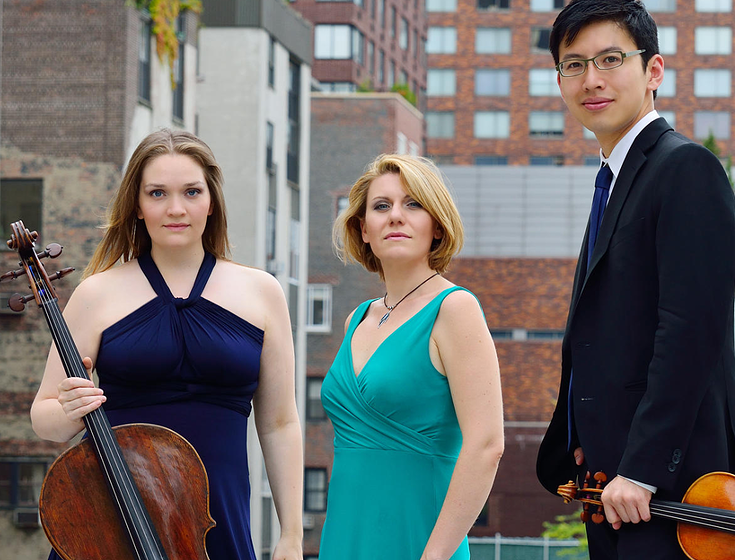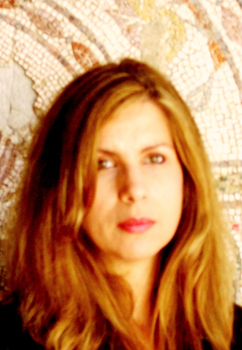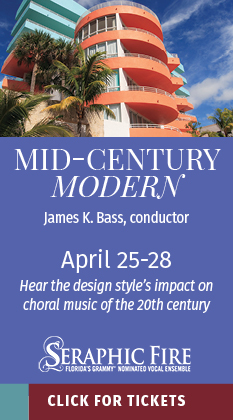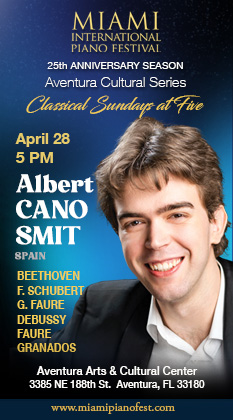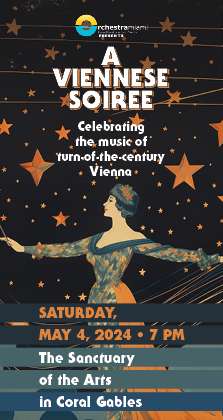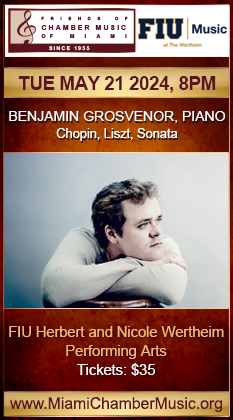Manhattan Piano Trio offers bracing music by Frost School faculty
Festival Miami’s admirable focus on contemporary music during its thirtieth anniversary edition continued on Wednesday evening with a concert by the Manhattan Piano Trio that featured scores by three faculty members of the University of Miami’s Frost School of Music. Each of the composers was present to introduce their work prior to the performances.
Charles Norman Mason said his Three-Legged Race was a commentary on the hyper-connectivity of modern life, exemplified by technology and the need, at times, to find a separate space. For Mason, hyper-connectivity equals high energy. The 2001 score is brisk, acerbic and playful with the trio’s unison line briefly disintegrating into fragmentary threads. Suggestions of jazz and stride grace the keyboard role.
Lansing McLoskey’s Glisten is part of a series of works that explore the relationship between the visual and musical arts. McLoskey utilizes classic dance and contrapuntal forms to suggest the reflection of light on glazed surfaces. A violin tremolo dominates the introduction and epilogue, both titled “Sheen.” “Glaze” is a dreamy Pavane with subtly varied dynamic gradations. “Luster,” a chaconne, brings elegant piano musings accompanied by pizzicato strings. “Glimmer” is a canon that breaks each of the instrumental lines into different rhythmic patterns, an expressive cello solo rising above the animated musical conversation.
Although McCloskey designates “Gleam” as an aria for solo violin, the movement is more a recitative that displayed Wayne Lee’s tonal depth and precision in pyrotechnical leaps. “Glint” is an inventive cadenza in which all three players explore harmonics in their instruments’ highest and lowest reaches. McLoskey’s lucidly crafted 2004 score received a tightly charged reading, the players equal to its formidable demands.
Dorothy Hindman’s Jerusalem Windows is a musical embodiment of Marc Chagall’s stained glass windows in the Synagogue at the medical center of Hadassah-Hebrew University in Jerusalem. Like Chagall’s wildly colorful abstractions, Hindman’s work abounds in fragments of color, short melodic cells, overlapping textures and sudden changes of timbre and meter.
Brief moments of expansive melody in the strings and sections for prepared piano (with objects placed on or between the instrument’s strings) spice the 2002 score. Hindman succeeds in creating a musical tapestry that parallels the leaping figures and color splashes that dominate Chagall’s vast abstractions. In a superbly detailed performance, pianist Milana Strezeva was a tower of strength in the busy keyboard lines. (Note: In addition to being a teacher, composer, and Charles Mason’s spouse, Hindman is also a regular contributor to South Florida Classical Review.)
The New York-based ensemble capped the program at Gusman Concert Hall with a full-throttle performance of a 20th-century classic.
The players’ youthful zeal permeated their reading of Ravel’s Piano Trio in A minor. After an unfocused first movement, the musicians balanced the rhythmic edginess and charm of Phantoum. In the noble passacaglia, Saeunn Thorsteinsdottir’s burnished cello tone blended wonderfully with Lee’s muted violin. The final Anime was lively indeed. While not the most subtle or Gallic inflected performance, the Manhattan Trio’s vibrant energy carried the day.
Festival Miami presents soprano Elizabeth Caballero, mezzo-soprano Robynne Redmon and bass-baritone Kevin Short with pianist Elaine Rinaldi in a program of excerpts from opera and musical theater 8 p.m. Friday at Gusman Concert Hall. 305-284-4940; festivalmiami.com.
Posted in Performances
Leave a Comment
Thu Oct 17, 2013
at 11:11 am
No Comments
